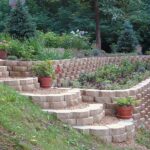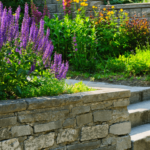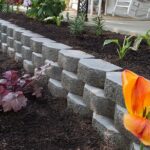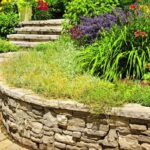A garden retaining wall is a structure that is built to hold back soil in a sloped area, creating a level surface for gardening or landscaping. These walls are not only functional but also add an aesthetic element to a garden, creating visual interest and defining different areas within the landscape.
There are several types of materials that can be used to build garden retaining walls, including concrete blocks, natural stone, wood, and brick. Each material offers different aesthetic qualities and levels of durability, so it’s important to consider both the practical and visual aspects when choosing which material to use.
Retaining walls serve several important functions in a garden, including preventing soil erosion, creating different levels for planting, and adding structure and definition to the landscape. They can also help to reduce water runoff and improve drainage in sloped areas, which can be especially important for gardens located on hilly terrain.
When building a garden retaining wall, it’s important to consider factors such as the height of the wall, the type of materials to be used, and the overall design aesthetic of the garden. Some walls may require additional reinforcement, such as drainage systems or geogrids, to ensure their stability over time.
Proper construction and maintenance of a garden retaining wall are essential to ensuring its longevity and effectiveness. Regular inspection and repair of any cracks or damage to the wall can help prevent structural issues and ensure the wall continues to function as intended.
Overall, garden retaining walls are a valuable addition to any landscape, helping to create a visually appealing and functional outdoor space. Whether used to terrace a sloped garden, create boundaries between different areas, or simply add a decorative element, retaining walls can enhance the beauty and usability of a garden in a variety of ways.
















